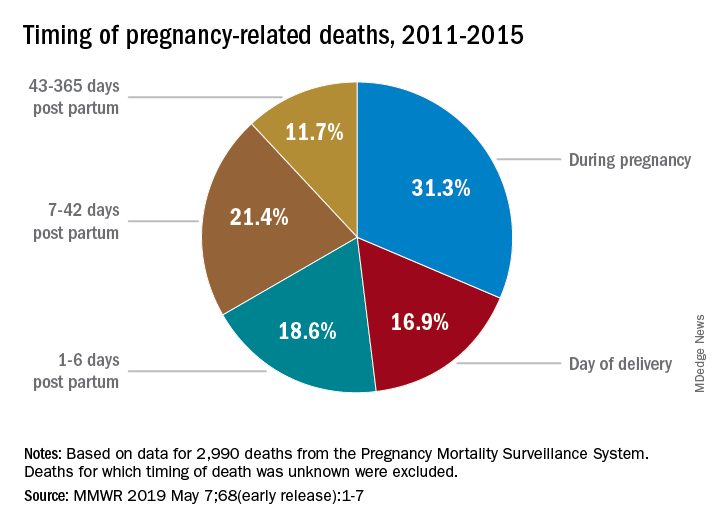
Pregnancy-related deaths have become a pressing concern in the United States, highlighting a stark rise in maternal mortality that impacts thousands of families each year. Alarmingly, over 80% of these deaths are preventable, yet the U.S. continues to lead high-income nations in maternal mortality rates. Research indicates that this upward trend has persisted from 2018 to 2022, with significant disparities evident across states and various racial groups. Factors such as inadequate postpartum care and systemic inequities within the healthcare system contribute to these troubling statistics. Addressing the crises of preventable deaths during pregnancy requires not only a better understanding of the factors at play but also an urgent overhaul of policies that affect maternal health across diverse communities.
The alarming increase in maternal fatalities during pregnancy draws attention to a critical public health issue. Often referred to as pregnancy-associated deaths, these fatalities underscore the urgent need for improved health services and more effective maternal care systems. Disparities in maternal health outcomes—often exacerbated by race and socioeconomic factors—further emphasize the complexities surrounding postpartum experiences. Moreover, as novel healthcare initiatives aim to reduce preventable deaths during pregnancy, the importance of systematic changes within the healthcare framework becomes increasingly evident. A reevaluation of postpartum care and supportive measures is crucial in combating the rising tide of mortality associated with childbirth.
Understanding Maternal Mortality: A U.S. Perspective
Maternal mortality in the United States has reached alarming heights, surpassing that of many other high-income nations. In the period from 2018 to 2022, the U.S. experienced a rise in pregnancy-related deaths, with a reported rate of 32.6 deaths per 100,000 live births in 2022. This upward trend signifies a critical public health emergency that demands immediate attention. Various factors contribute to this increasing mortality rate, including inadequate prenatal care and a fragmented healthcare system that fails to support expectant mothers effectively.
Despite over 80 percent of pregnancy-related deaths being deemed preventable, systemic issues persist within the healthcare landscape. The research highlighted that racial and ethnic disparities add another layer of complexity, with American Indian and Alaska Native women at heightened risk. Such stark differences underscore the need for interventional strategies that target both healthcare practices and socio-economic factors influencing maternal health outcomes.
The Importance of Postpartum Care
Postpartum care is crucial yet often overlooked in the conversation about maternal health. Many believe that maternal care concludes shortly after childbirth, which neglects the significant risks still present in the postpartum phase. Researchers have found nearly a third of pregnancy-related deaths occur between 42 days and one year after delivery, highlighting the need for continued healthcare support during this period. Proper postpartum care can help manage complications like cardiovascular diseases and chronic conditions that may arise or worsen following pregnancy.
Investing in comprehensive postpartum care strategies is vital to ensuring maternal well-being. This involves developing tailored programs that address the unique needs of new mothers, including mental health resources, chronic disease management, and accessible healthcare services. By focusing on extending maternal care past the traditional six-week mark, we can significantly lower the risk of late maternal deaths and improve overall health outcomes for mothers throughout their recovery journey.
Innovative solutions within postpartum care should also include education on recognizing signs of complications and access to emergency care when needed. Ensuring equitable access to such services across different demographic groups can help bridge the gap in disparities observed in maternal health.
Race Disparities in Maternal Health
Race disparities remain a significant concern in the realm of maternal health, as evidenced by research indicating that Black and Native American women experience far higher maternal mortality rates when compared to white women. The statistics are troubling, with rates nearly four times higher for American Indian and Alaska Native women. This inequality highlights widespread issues such as systemic racism within healthcare practices, social determinants of health, and access to quality care, which combine to escalate vulnerability among marginalized groups.
Addressing these disparities necessitates a multifaceted approach that involves healthcare policy reform, community engagement, and targeted initiatives aimed at improving inclusivity in maternal healthcare programs. Policymakers must acknowledge and act upon the systemic barriers faced by women of color, ensuring that all expectant mothers receive timely care tailored to their needs. By implementing evidence-based strategies that reduce these inequalities, we can work towards significantly lowering maternal mortality rates in affected populations.
The Role of Healthcare Systems in Pregnancy Outcomes
The structure and functioning of the U.S. healthcare system play a pivotal role in determining pregnancy outcomes. The fragmented nature of healthcare services can hinder effective prenatal and postpartum care, with many women facing barriers such as cost, lack of insurance, and geographical limitations. These systemic shortcomings contribute to the persistent rise in pregnancy-related deaths, as frustration with the healthcare system often leads to disengagement from necessary medical services.
Enhancing the healthcare system requires a commitment to comprehensive reforms that prioritize maternal health. This includes improving access to high-quality prenatal care, providing continuity of care throughout pregnancy, and ensuring appropriate resources for postpartum recovery. A more integrated healthcare approach, where all aspects of maternal care are coordinated effectively, could help eliminate some of the existing barriers and lower rates of preventable deaths during pregnancy.
Investing in Maternal Health Research
Ongoing research into maternal health is crucial for addressing the rising rates of pregnancy-related deaths in the United States. The implementation of accurate data collection methods, including the pregnancy checkbox on death certificates, has begun to provide valuable insights that can inform public health policies. However, sustained investment in research funding is essential to continue identifying key risk factors, understanding the causes of maternal mortality, and developing effective interventions.
Additionally, research should focus on understanding the long-term consequences of childbirth and the healthcare needs of women over time. By prioritizing maternal health research, we can gain a deeper understanding of the complex interplay between socio-economic factors and health outcomes, which can lead to evidence-based policy decisions and improved healthcare strategies that effectively lower maternal mortality rates.
Preventing Preventable Deaths During Pregnancy
It is alarming that a significant percentage of pregnancy-related deaths in the U.S. are classified as preventable. By identifying gaps in care delivery and addressing the factors contributing to these deaths, healthcare providers can employ interventions that reduce risk during pregnancy and childbirth. These interventions can range from improving prenatal screening to enhancing healthcare provider training to better recognize and manage complications.
Collaboration between healthcare systems, community organizations, and policymakers is vital in creating an effective network aimed at preventing these deaths. Comprehensive public health campaigns can raise awareness of risks associated with pregnancy and childbirth and promote the importance of timely medical attention and care. Empowering women with knowledge about their health and creating supportive environments are crucial steps towards achieving significant reductions in preventable deaths.
California as a Model for Maternal Health Improvement
The findings from recent studies suggest that California’s advanced maternal health strategies could serve as a blueprint for other states struggling with high maternal mortality rates. California boasts a lower maternal death rate, attributed to extensive outreach programs, community health initiatives, and accessible healthcare services. By examining and adopting these successful practices, other states can work towards achieving similar improvements in maternal health outcomes.
Adopting California’s framework requires state-specific adaptations to address local demographics and regional challenges, leveraging resources to create sustainable solutions. Enhanced public health infrastructure and coordinated care models are essential for replicating California’s successes. Moreover, cross-state collaborations can facilitate shared learning and the implementation of effective maternal health practices across the nation.
Psychological Impact on Maternal Health
The psychological aspect of maternal health is often undervalued in discussions surrounding pregnancy and postpartum care. Mental health issues such as postpartum depression and anxiety can significantly affect maternal outcomes and contribute to the overall mortality rate. It is crucial to understand that mental well-being is inherently linked to physical health, making it imperative to address psychological support as a fundamental component of maternal healthcare.
Incorporating mental health services into maternal care programs can ensure that women receive comprehensive support throughout their pregnancy and postpartum periods. Screening for mental health issues should become standard practice in prenatal care settings, allowing for early identification and appropriate interventions. By prioritizing mental health alongside physical health, we can create a holistic approach that substantially improves outcomes for both mothers and their children.
The Importance of Advocacy in Maternal Health
Advocacy plays a vital role in driving change within the maternal health landscape. Advocates for maternal health raise awareness about the preventable nature of many pregnancy-related deaths and the systemic inequities that contribute to them. Engaging with policymakers to promote legislation that supports maternal health initiatives is essential to create meaningful change.
Increased public pressure can lead to the allocation of more resources toward maternal healthcare, improved training for healthcare providers, and the implementation of policies that ensure equitable access to care. Grassroots advocacy efforts can mobilize communities, bringing attention to disparities in maternal health, and emphasizing the need for systemic reform. Together, advocacy and community engagement can create momentum for improving maternal health outcomes at all levels.
Frequently Asked Questions
What are the primary causes of pregnancy-related deaths in the U.S.?
Pregnancy-related deaths in the U.S. are predominantly caused by cardiovascular disease, which accounts for over 20% of deaths, followed by complications such as hemorrhage and infection. It’s crucial to address these causes, as many pregnancy-related deaths are preventable with improved prenatal and postpartum care.
How do race disparities impact maternal mortality rates in the U.S.?
Race disparities significantly impact maternal mortality rates, as American Indian and Alaska Native women face the highest rates at 106.3 deaths per 100,000 live births. Non-Hispanic Black women also experience elevated rates compared to white women. These disparities highlight the urgent need for equitable healthcare policies and access to comprehensive maternity care.
What role does postpartum care play in preventing pregnancy-related deaths?
Postpartum care is essential in preventing pregnancy-related deaths, as nearly one-third of these deaths occur between 42 days and one year post-pregnancy. Ensuring continuous care beyond the immediate postpartum period is vital for addressing ongoing health issues and reducing mortality rates.
Are pregnancy-related deaths in the U.S. preventable?
Yes, over 80% of pregnancy-related deaths in the U.S. are considered preventable. This underscores the importance of improving the healthcare system, access to prenatal care, and extending postpartum support to significantly reduce these fatalities.
What are the implications of the rising maternal mortality rate in the U.S.?
The rising maternal mortality rate in the U.S., which has increased significantly from 2018 to 2022, indicates systemic issues within the healthcare system. It emphasizes the need for urgent reforms in maternal health policies and increased investment in healthcare infrastructure to prevent such preventable deaths.
How does the U.S. maternal mortality rate compare to other high-income countries?
The U.S. has the highest maternal mortality rate among high-income countries, with significant variations among states and racial groups. This stark comparison highlights the need for targeted interventions and policies to improve maternal health outcomes and ensure equitable access to care.
What measures can be taken to improve pregnancy-related healthcare outcomes?
To improve pregnancy-related healthcare outcomes, measures such as increasing funding for public health programs, enhancing access to comprehensive maternity care, addressing policy disparities among states, and focusing on innovative solutions for prenatal and postpartum care must be pursued.
What is the significance of including late maternal deaths in mortality statistics?
Including late maternal deaths, which occur between 42 days and one year postpartum, is significant because these deaths reflect ongoing health risks and the need for continuous care. Recognizing this aspect helps to reshape maternal health definitions and improve healthcare strategies during the postpartum period.
How did the COVID-19 pandemic affect pregnancy-related deaths?
The COVID-19 pandemic exacerbated existing disparities in maternal health, leading to a sharp increase in pregnancy-related deaths in 2021. Factors such as strained healthcare resources and the rising prevalence of chronic conditions among childbearing individuals contributed to this alarming trend.
| Key Points | Details |
|---|---|
| Pregnancy-Related Deaths | Pregnancy-related deaths in the U.S. are high and mostly preventable, indicating systemic issues in maternal healthcare. |
| Maternal Mortality Rate | The U.S. has the highest maternal mortality rate among high-income countries, with a significant rise from 2018 to 2022. |
| Disparities | There are major disparities by race and state, with American Indian/Alaska Native women having rates almost four times higher than white women. |
| Leading Cause | Cardiovascular disease now accounts for over 20% of pregnancy-related deaths, shifting focus from hemorrhage. |
| Late Maternal Deaths | Late maternal deaths (deaths between 42 days to 1 year postpartum) account for nearly a third of pregnancy-related deaths. |
| Need for Better Policies | Policy changes and improved healthcare infrastructure are needed to address rising maternal mortality rates effectively. |
Summary
Pregnancy-related deaths continue to be a critical concern in the U.S., where more than 80% of these fatalities are deemed preventable. The need for better prenatal care, along with extended postpartum support, is essential in reducing the maternal mortality rate which disproportionately affects racial minorities and varies widely between states. Addressing these disparities and enhancing healthcare infrastructure can ultimately help drive down pregnancy-related deaths and improve health outcomes for mothers.




